75 million school-aged children and youth are in desperate need of educational support, either in danger of, or already missing out on their education. Communities highlight the importance of education during times of crises, yet education appeals receive less than 2% of humanitarian funding. The right to education is most at risk during emergencies but it is also the exact time when it is needed the most. - Education Cannot Wait
This month in Let’s Get Schooled, we discuss displaced persons and efforts to bring education to millions of displaced children and youth.
Who are Displaced Persons?
Displaced Persons are those who are forced to leave their homes against their will / not by choice. This happens due to war and conflict, persecution, or environmental disruption related to climate change or natural disaster. Despite the fact that displaced persons all suffer tragedy not of their own making, they are not seen equally under international law.
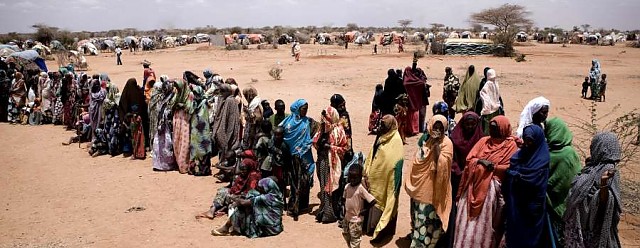
A FEW IMPORTANT DEFINITIONS AND DISTINCTIONS...
Internally Displaced Persons (IDPs) are persons who remain within their country’s borders. They are not protected by international laws. Instead their circumstance are governed by national policies and aid organizations.
Asylum Seekers are persons who cross international borders to seek sanctuary.
Refugees are persons who have crossed international borders and been granted asylum, entitling them to protection under international laws. These individuals are deemed to be fleeing armed conflict or persecution. The term “Refugee” has a legal definition.
Migrants cross borders to find work, obtain education, reunite with family, or for other reasons to seek a better life. They often come from dire situations like poverty and famine. The term “Migrant” does not have a legal definition.
Adding to the Confusion: The terms Refugee, Migrant and Asylum-seeker are often used interchangeably in the media and by politicians.
Read: Refugees-Migrants-Frequently-Asked-Questions-faqs
Read: What-Is-a-Refuge
Discover: Together, an UN campaign aimed at countering xenophobia and discrimination towards refugees and migrants.
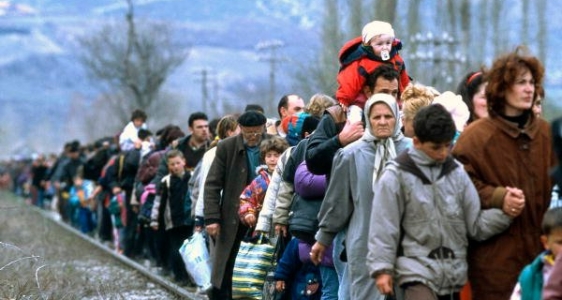
REALITY CHECK
- There are currently twice as many IDPs as refugees in the world. Despite its global scale, the issue of internal displacement remains largely overshadowed, particularly with the current global focus and public attention on refugees and migrants.
- There were 6.9 million new internal displacements by conflict and violence in 2016.
- There were 24.2 million new displacements by disasters in 2016.
- By the end of 2016 there were 40.3 million people living in internal displacement as a result of conflict and violence in the world. An unknown number of people remain displaced as a result of disasters that occurred in and prior to 2016.
- Although there is an obvious link between internal and cross-border displacement, the exact push and pull factors that explain how someone who is an IDP one day can become a refugee, an asylum seeker or an international migrant the next are still unclear.
- Six of the ten countries that produced the most refugees in 2015 – Afghanistan, Colombia, the Democratic Republic of Congo, South Sudan, Sudan and Syria – were also among the ten with the largest number of IDPs. -
- 2017 Global Report on Internal Displacement (GRID)

ENVIRONMENTAL REFUGEE … NOT REALLY A REFUGEE
Persons displaced due to environmental disruption related to climate change or natural disaster, and cross borders have no protection under international law because they will not meet the standards to apply for refugee status as outlined in 1951 Geneva (Refugee) Convention.
While not legally recognized at refugees, the UN Refugee Agency does recognize a responsibility to address the crisis that persons displaced by climate/weather/natural disaster face. UNHCR supports the Platform on Disaster Displacement, which will coordinate the implementation of the recommendations from the Nansen Initiative Protection Agenda.
Read: Environmental Refugees (Climate Change and How it Affects People's Lives)
Watch: Protecting Climate Refugees
Read: UN/Global Issues/Refugees
“If Europe thinks they have a problem with migration today … wait 20 years,” said retired US military corps brigadier general Stephen Cheney. “See what happens when climate change drives people out of Africa” - The Guardian
WORKING TOWARD A SOLUTION
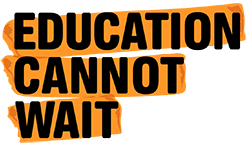 Education Cannot Wait (ECW) is the first global movement and fund dedicated to education in emergencies and protracted crises. ECW was established during the World Humanitarian Summit in 2016 by international humanitarian and development aid actors, along with public and private donors, to help reposition education as a priority on the humanitarian agenda.
Education Cannot Wait (ECW) is the first global movement and fund dedicated to education in emergencies and protracted crises. ECW was established during the World Humanitarian Summit in 2016 by international humanitarian and development aid actors, along with public and private donors, to help reposition education as a priority on the humanitarian agenda.
ECW’s mandate is articulated around five core functions:
- Inspire political commitment so that education is viewed by both governments and funders as a top priority during crises.
- Plan and respond collaboratively, with a particular emphasis on enabling humanitarian and development actors to work together on shared objectives.
- Generate and disburse additional funding to help close the $8.5 billion funding gap needed to reach 75 million children and youth.
- Strengthen capacity to respond to crises, nationally and globally, including the ability to coordinate emergency support.
- Improve accountability by developing and sharing knowledge, including collection of more robust data in order to make better-informed investment decisions, and knowledge of what works and does not.
Learn More: www.educationcannotwait.org

 The Global Partnership for Education (GPE), established in 2002, is a multi-stakeholder partnership and funding platform that aims to strengthen education systems in developing countries in order to dramatically increase the number of children who are in school and learning. GPE brings together developing countries, donors, international organizations, civil society, teacher organizations, the private sector and foundations.
The Global Partnership for Education (GPE), established in 2002, is a multi-stakeholder partnership and funding platform that aims to strengthen education systems in developing countries in order to dramatically increase the number of children who are in school and learning. GPE brings together developing countries, donors, international organizations, civil society, teacher organizations, the private sector and foundations.
Working with Countries Affected by Fragility and Conflict is one of their focus areas: GPE finances education interventions that accompany children throughout a country's progress from preparedness through to recovery to reduce the impact of crises. It recognizes that securing education services across the divide between humanitarian and development interventions is crucial to maintaining progress. They promote a foundation for better coordination and dialogue among development and humanitarian actors so that resources are used in the best way possible in crisis settings.
GPE supports countries with three mechanisms:
- Accelerated funding: allows disbursement within eight weeks of up to 20% of a GPE grant. The use of funds is based on the education cluster needs assessment and agreed by the local education group and the education cluster. Activities can include temporary shelters, school meals and school supplies, as well as classroom construction, teacher remuneration and school grants.
- Transitional education planning: GPE provides financial and technical support to help countries establish a transitional education plan. This forms the basis for a coordinated approach by identifying priority actions in the medium term to maintain progress toward ensuring the right to education and meeting longer-term educational goals.
- Operational framework for effective support in countries affected by fragility and conflict: under this policy GPE is able to redirect resources to priority activities arising from the emergency.
These mechanisms ensure that GPE funding to the education sector does not stop when the emergencies strike and that partners can work together in identifying the most pressing needs and the best use of the funds.
GPE actively supports Education Cannot Wait (ECW) and is working closely with the ECW Secretariat to establish a strong foundation and operational framework.
Learn More: www.globalpartnership.org
Launched in 2013, the No Lost Generation Initiative is an ambitious commitment to action by humanitarians, donors and policy to support children and youth affected by the Syria and Iraq crises. Covering the crises inside Syria and Iraq, as well as the refugee hosting countries in the region (Egypt, Jordan, Lebanon and Turkey), No Lost Generation's 2017 Targets are:
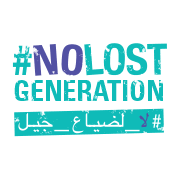 PILLAR I: EDUCATION - Ensure that over 1.3m children are enrolled in formal or nonformal education in 3RP countries and reach a further 1.3m children inside Syria with non-formal education; working towards the end goal of getting all children affected by the crisis in school.
PILLAR I: EDUCATION - Ensure that over 1.3m children are enrolled in formal or nonformal education in 3RP countries and reach a further 1.3m children inside Syria with non-formal education; working towards the end goal of getting all children affected by the crisis in school.
PILLAR II: CHILD PROTECTION - Reach over 100,000 boys and girls with specialized child protection services; and over 1m children with structured, sustained child protection or psychosocial support programmes.
PILLAR III: ADOLESCENTS & YOUTH - Increase the volume and quality of programming for young people, reaching over half a million with positive engagement opportunities by the end of the year.
Learn More: http://nolostgeneration.org
Looking ahead…
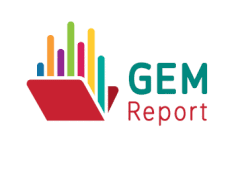 The 2019 Global Education Monitoring (GEM) Report will focus on Education and Migration, to enhance understanding of migration and education dynamics. It will give voice to educational challenges and opportunities facing both voluntary and involuntary migrants in host and home communities. It will draw upon wide-ranging evidence from both quantitative and qualitative studies, and the analyses, conclusions and recommendations will advance the aims of SDG4.
The 2019 Global Education Monitoring (GEM) Report will focus on Education and Migration, to enhance understanding of migration and education dynamics. It will give voice to educational challenges and opportunities facing both voluntary and involuntary migrants in host and home communities. It will draw upon wide-ranging evidence from both quantitative and qualitative studies, and the analyses, conclusions and recommendations will advance the aims of SDG4.
Read: Concept note for 2019 GEM Report on Education and Migration
